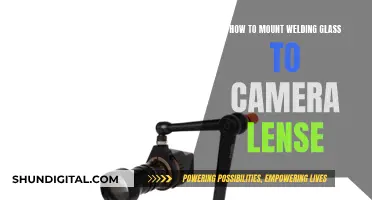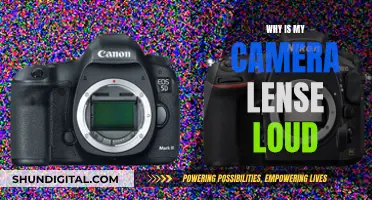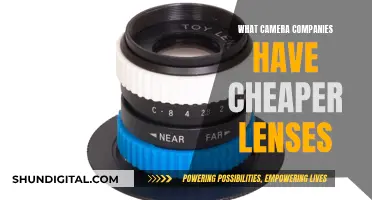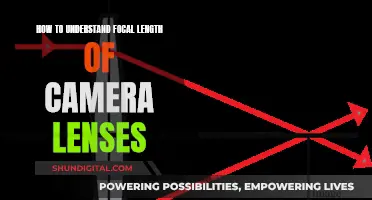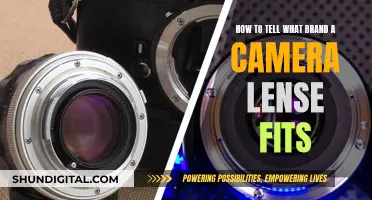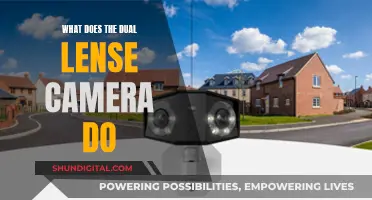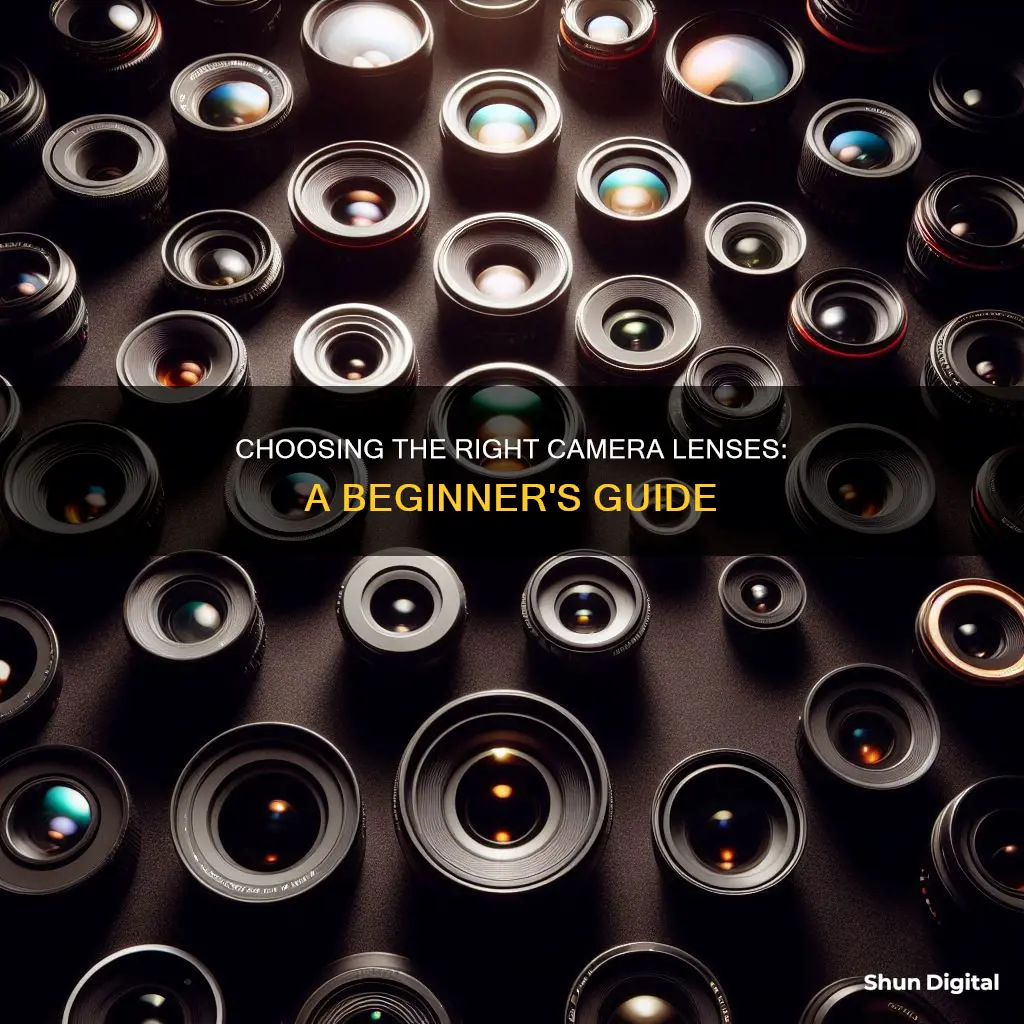
Choosing the right camera lens is crucial to achieving the perfect shot. With so many options available, it can be challenging to select the right one for your needs. This guide will help you navigate the different types of lenses and their features to make an informed choice.
First, consider your photographic niche and budget. While kit lenses that come with interchangeable lens cameras are adequate, investing in multiple lenses tailored to your specific needs can enhance your photography. Ensure the lens mount matches your camera body, as different brands like Nikon and Canon are not interchangeable without adaptors. Also, check sensor size compatibility; full-frame lenses will only work with full-frame cameras, while APS-C lenses are designed for cropped sensor cameras.
Next, decide between prime (fixed focal length) and zoom lenses. Prime lenses offer superior quality, wider apertures, and are more compact and affordable. In contrast, zoom lenses provide versatility with variable focal lengths but tend to be pricier and bulkier.
Focal length is another critical factor. Wide-angle lenses (12mm-35mm) are ideal for landscape and architecture photography, while standard lenses (35mm-85mm) offer a natural perspective for portraits and street photography. Telephoto lenses (70mm and above) are perfect for sports, wildlife, and distant subjects.
Additionally, consider aperture, which controls the amount of light entering the camera and affects depth of field. Lenses with wider apertures (lower f-stop numbers) are better for low-light conditions and creating blurred backgrounds.
Other features to look for include image stabilisation, autofocus, and manual focus override.
Finally, don't be afraid to invest in a high-quality lens that suits your requirements. Remember, the right lens can transform an ordinary snapshot into a lasting memory.
What You'll Learn
- Focal length: the distance from the centre of the lens to the sensor when the subject is in focus
- Aperture: the amount of light that can enter the camera
- Prime vs. zoom lens: the former has a fixed focal length, the latter is more versatile
- Compatibility: ensure the lens fits your camera
- Budget: prices vary, so set a limit

Focal length: the distance from the centre of the lens to the sensor when the subject is in focus
Focal length is a measure of how strongly a lens converges or diverges light. In simple terms, it is the distance, in millimetres, between the "nodal point" of the lens and the camera's sensor when the subject is in focus. The nodal point is where light converges in a lens.
Focal length is important because it relates to the field of view of a lens, which is how much of the scene you will capture. It also explains how large or small a subject in your photo will appear. Higher values (like 500mm) are more "zoomed in", while lower values (like 20mm) are more "zoomed out".
For example, if you want to fit more into your frame, you might want to use a wide-angle focal length, such as 14mm, 20mm, 24mm, 28mm, or 35mm. On the other hand, if you want to get as close as possible to your subject, you should use a telephoto lens with a focal length of 50mm to 100mm.
The focal length of a lens is not the same as its physical length and has little to do with its overall size. It is also important to note that focal length is a property of the lens itself, not the camera. However, the size of the camera sensor will affect how your photos will look at a particular focal length.
When choosing a lens, it is crucial to consider what type of photography you want to do. Landscape photography, for instance, usually requires wider-angle lenses, while portrait photography is best achieved with lenses between 45mm and 85mm.
Camera Lenses: Weatherproof or Not?
You may want to see also

Aperture: the amount of light that can enter the camera
Aperture is the opening in a lens that lets light pass through to enter the camera. It is measured in f-stops, with a lower f-stop number indicating a wider aperture, and a higher f-stop number indicating a narrower aperture. The wider the aperture, the more light will enter the camera, and vice versa.
The aperture of a camera lens is the primary control for the amount of light that enters the camera. It also impacts the depth of field in an image. A wider aperture (smaller f-number) will result in a shallower depth of field, with the background appearing blurred. Conversely, a narrower aperture (larger f-number) will result in a deeper depth of field, with both the subject and background in focus.
Aperture is one of the three pillars of photography, along with shutter speed and ISO. These settings are often referred to as the "exposure triangle" as they collectively determine the exposure of an image. Aperture is the most important of these settings as it also affects the brightness of an image. A wider aperture will result in a brighter photograph, while a narrower aperture will make the photo darker.
In addition, the aperture also determines the shutter speed and ISO settings required to achieve the correct exposure. A wider aperture requires a shorter shutter speed and a higher ISO, whereas a narrower aperture needs a longer shutter speed and a lower ISO.
Aperture is not a setting on the camera but a characteristic of the lens. It is determined by the physical size of the diaphragm and can be adjusted by changing lenses or using a zoom lens. Most DSLR cameras have a minimum aperture of f/1.4, which is very wide and lets in a lot of light. The smallest common aperture is typically f/32.0, which lets in very little light.
When choosing a lens, it is important to consider the maximum and minimum apertures. The maximum aperture is usually included in the lens name and is crucial as it indicates how much light the lens can gather. Lenses with wider maximum apertures are considered "fast" and are more expensive. The minimum aperture is less important as modern lenses can provide at least f/16, which is sufficient for everyday photography.
Camera Lenses: Sales, Deals, and Discounts
You may want to see also

Prime vs. zoom lens: the former has a fixed focal length, the latter is more versatile
When choosing a lens, it's important to consider your needs and preferences as a photographer. Two types of lenses you can choose from are prime and zoom lenses.
Prime Lenses
Prime lenses have a fixed focal length, meaning the angle of view cannot be changed. To enlarge your subject and make it fill more of the frame, you must physically get closer to it. Similarly, the only way to fit more into the frame is to step back. Prime lenses are often smaller and lighter than zoom lenses, and they offer superior image quality, especially in low-light conditions, as they tend to have larger maximum apertures. They are also generally more affordable.
Zoom Lenses
Zoom lenses, on the other hand, offer a variable focal length, allowing you to change the angle of view by turning the zoom ring. This means you can make objects appear larger or smaller without having to move. Zoom lenses are extremely versatile and convenient, especially when you need to handle a variety of different situations. They often come with image stabilization systems, which can help you capture sharp images in low-light conditions.
The choice between a prime and a zoom lens depends on your specific needs and preferences. If you want a shallow depth of field and beautiful bokeh, a prime lens is ideal. If you need versatility, such as when travelling or shooting weddings, a zoom lens is a better option. Additionally, consider the weight and cost of the lens, as well as your shooting style and available space to move around.
Cleaning Camera Lenses: A Step-by-Step Guide
You may want to see also

Compatibility: ensure the lens fits your camera
Compatibility is key when it comes to choosing a lens for your camera. You need to ensure that the lens you buy will physically fit your camera. This means understanding the type of lens mount your camera has, as well as the size of your camera's sensor.
The junction where your camera meets the lens is called the mount. Every major camera company uses its own proprietary mount, so if you want to use a lens on your Canon camera, you'll have to buy a Canon lens or a third-party lens designed to fit that specific mount. Third-party manufacturers such as Sigma, Tamron, and Tokina make lenses for a wide range of camera models.
DSLR lenses and mirrorless camera lenses also differ. DSLRs require the lens mount to sit relatively far from the sensor to accommodate a mirror, whereas mirrorless cameras don't have this requirement, so the lens can sit closer to the sensor. This means that it's simple to adapt DSLR lenses to a mirrorless camera, but not the other way around. Sensor size also affects your lens options: full-frame lenses will work on cameras with smaller sensors, but the image will look zoomed-in.
If you have a mirrorless camera body, you can adapt any DSLR lens to fit. If you have an APS-C body, you can use both APS-C and full-frame lenses. However, if you have a full-frame body, you can only use full-frame lenses, as APS-C lenses are designed for smaller sensors and will not fit.
Projector Lenses: Can They Double as Cameras?
You may want to see also

Budget: prices vary, so set a limit
When it comes to buying camera lenses, one of the most important factors to consider is your budget. While it can be tempting to invest in the most expensive lenses, it's important to remember that you don't need the highest quality lenses to take great photographs.
There are a few ways to save some money when purchasing lenses. Firstly, consider investing in third-party lenses. Brands like Rokinon, Sigma, and Tamron produce similar lenses to brands like Nikon, Sony, and Canon at a reduced price. Additionally, some brands offer multiple versions of lenses at various price points. You can often save money by purchasing a lens without functions like image stabilisation or autofocus motors. While these lenses may require more practice to use, they are much more affordable.
Another way to save money is to buy a prime lens instead of a zoom lens. Prime lenses tend to be smaller and lighter than zoom lenses, have faster maximum apertures, and produce sharper images. They are also usually cheaper. However, with a prime lens, you will need to bring additional lenses of different focal lengths for various shooting ranges.
When deciding on a budget, it's important to consider the type of photography you want to do. Different lenses are better suited for different types of photography, and prices can vary widely. For example, if you want to do portrait photography, the best lenses are between 45mm and 85mm. On the other hand, if you want to do landscape photography, a wide-angle lens with a focal length of 14mm to 35mm is recommended.
It's also worth noting that the larger the maximum aperture of a lens, the more expensive it will be. Lenses with larger apertures allow more light to enter the lens, making them better for low-light photography. However, most beginner photographers can get away with smaller apertures, which are much more affordable.
In conclusion, when choosing camera lenses, it's important to set a budget and do your research. By considering your needs and expertise, you can find lenses that fit your budget and still produce stunning results.
Old Lenses, New Cameras: Is There Compatibility?
You may want to see also
Frequently asked questions
Camera lenses can be split into two main types: prime and zoom. Prime lenses have a fixed focal length and are known for delivering high-quality images with wider apertures. Zoom lenses have a variable focal length and are a convenient option for photographers who want to avoid switching between multiple lenses.
Focal lengths can be split into three categories: wide-angle, medium, and telephoto. Wide-angle lenses (12mm-35mm) are great for landscape photography and architecture photography. Medium or standard lenses (35mm-70mm) are good for portraiture, street photography, and travel photography. Telephoto lenses (70mm and above) are used for sports photography, wildlife photography, and other situations that require magnification.
In addition to focal length, you should also consider the aperture, which controls how much light the lens lets in. A wider aperture will allow for a shallow depth of field and is better for low-light settings. You should also check that the lens is compatible with your camera body and sensor size.
Buying a new lens is ideal, but if you're on a budget, a second-hand lens can be a good option. Just be sure to check the condition and appearance of the lens, including any scratches, dents, or mould.


